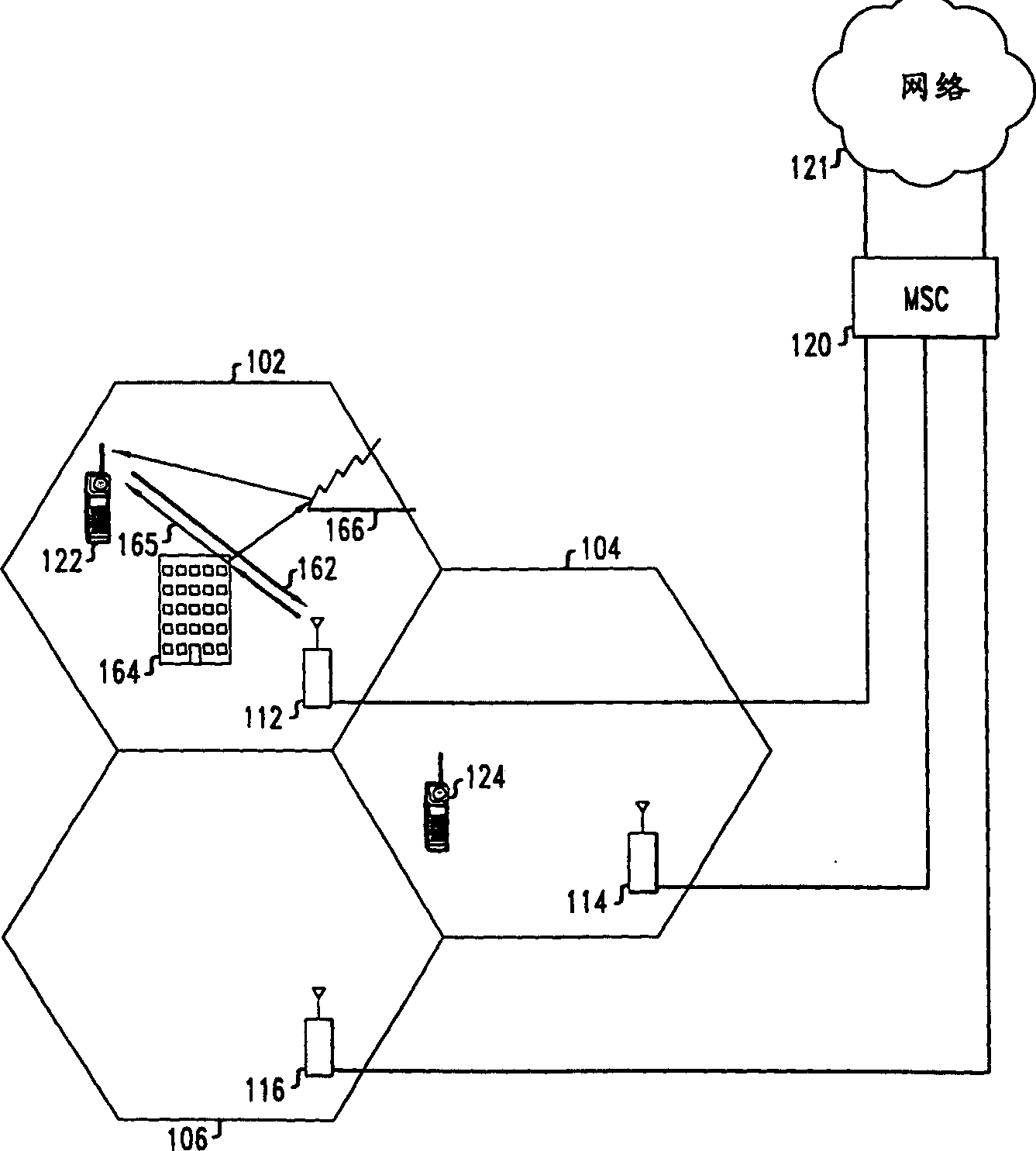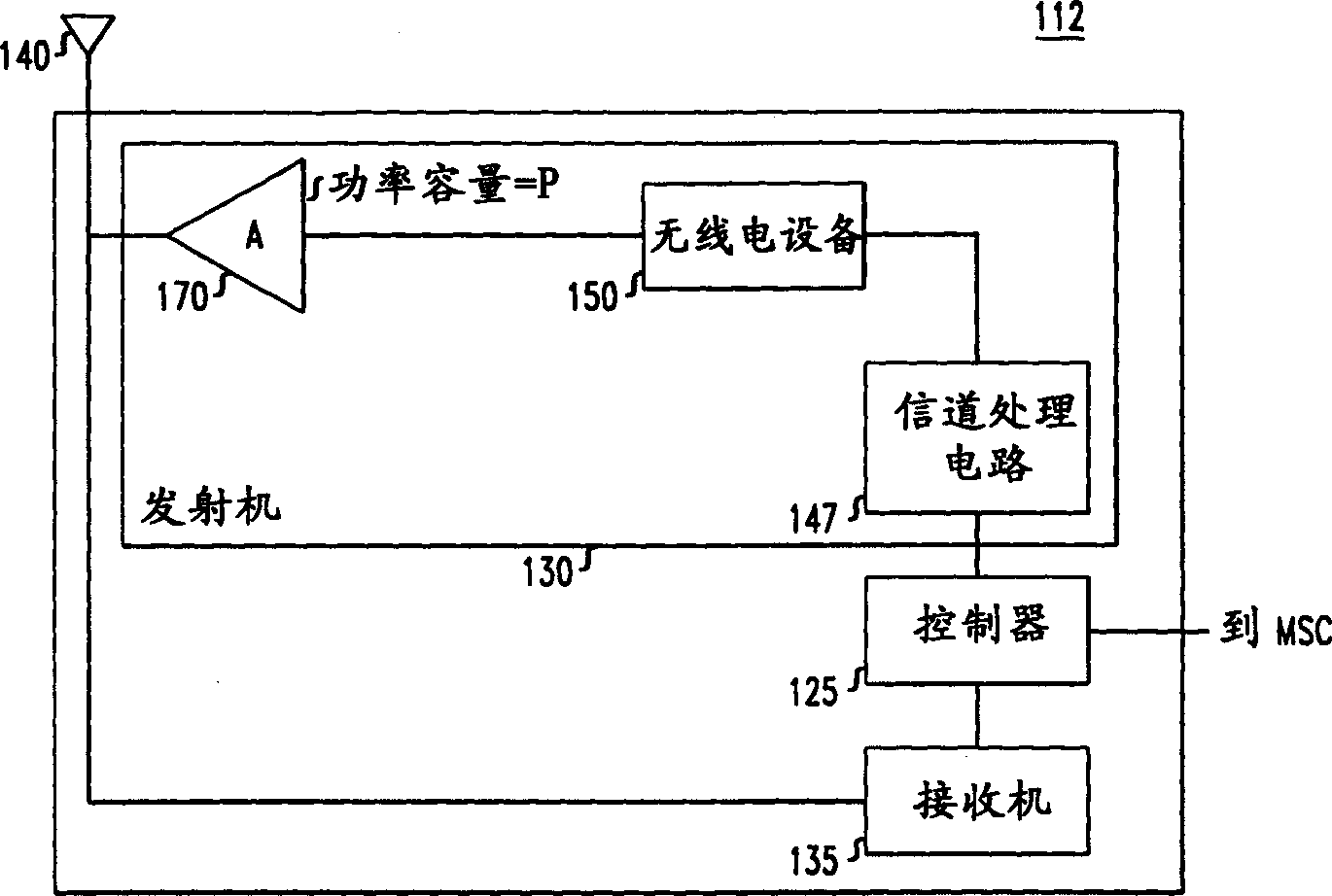Power amplifier share in wireless communication system with transmitting diversity
A transmit diversity and amplifier technology, applied in the direction of amplifiers with distributed constants in the coupling network, power amplifiers, diversity/multi-antenna systems, etc., can solve the problems of power amplifier power capacity waste, power capacity waste, cost, etc.
- Summary
- Abstract
- Description
- Claims
- Application Information
AI Technical Summary
Problems solved by technology
Method used
Image
Examples
Embodiment Construction
[0023] In a conventional wireless communication system 100, figure 1 As shown, the geographic area is divided into a plurality of cells 102 , 104 and 106 . Each cell 102, 104, and 106 includes at least one base station 112, 114, and 116, respectively. Each base station 112 , 114 and 116 includes equipment for communicating with a Mobile Switching Center (MSC) 120 . MSC 120 is connected to a local and / or long-distance transport network 121, such as the Public Switched Telephone Network (PSTN). Each base station also includes equipment for communicating with mobile terminals such as 122,124. Each communication session with a specific mobile terminal is called a "call".
[0024] figure 2 Base station 112 is shown in more detail. Base station 112 includes controller 125 coupled to transmitter 130 and receiver 135 . Transmitter 130 and receiver 135 are coupled to antenna 140 . see figure 1 and 2 , the operation of the base station 112 is now described. Digital signals ar...
PUM
 Login to View More
Login to View More Abstract
Description
Claims
Application Information
 Login to View More
Login to View More - R&D
- Intellectual Property
- Life Sciences
- Materials
- Tech Scout
- Unparalleled Data Quality
- Higher Quality Content
- 60% Fewer Hallucinations
Browse by: Latest US Patents, China's latest patents, Technical Efficacy Thesaurus, Application Domain, Technology Topic, Popular Technical Reports.
© 2025 PatSnap. All rights reserved.Legal|Privacy policy|Modern Slavery Act Transparency Statement|Sitemap|About US| Contact US: help@patsnap.com



